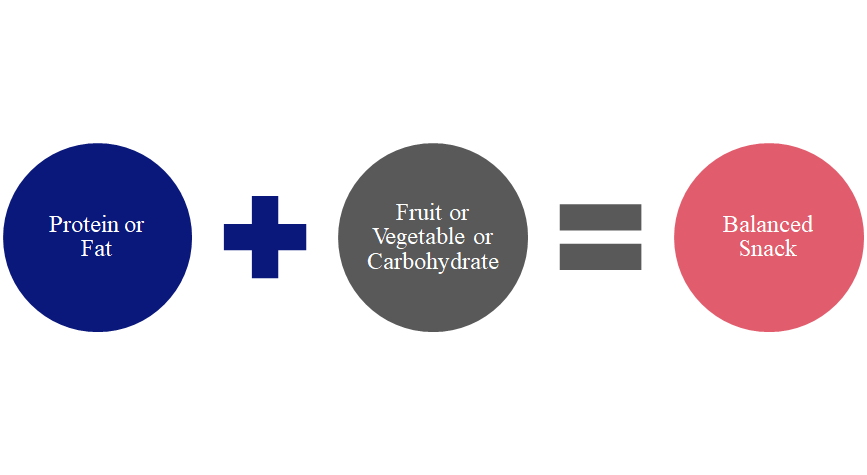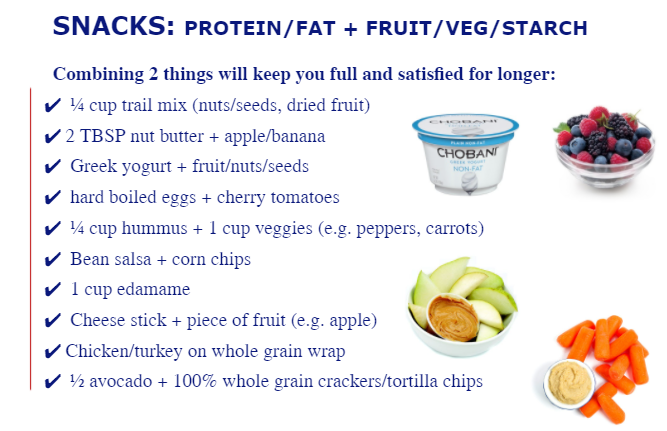Nutrition: Pairing Snacks for Sustained Energy
Nutrition: Pairing Snacks for Sustained Energy
What’s your go-to snack?
Whether we’re planning ahead for a busy day or simply looking for something to tide us over until our next meal, snacks can be a great opportunity to incorporate a variety of foods into your diet.
What components make for a balanced snack?
The key to smart snacking is pairing two foods together. Fortunately, there is a lot of flexibility around what you can pair together based on what is available to you and what foods you enjoy!

For most snacks, we recommend you pair a source of protein or fat with a fruit, vegetable, or other source of carbohydrate. Combining these two components together will help keep you full for longer while also providing your body with nutrition it needs.
Why do we need both components? Could I just have one?
Carbohydrates, whether in the form of fruits, vegetables, or starches, are our body’s quickest and preferred source of energy. They are digested faster than protein or fat, and if eaten without either of these components to balance them out, can spike blood sugar to high levels.
Protein and fat, on the other hand, are digested more slowly and therefore promote a more gradual shift in blood sugar levels. Because of this, incorporating a source of protein or fat to your snack will keep you satisfied for longer than eating carbohydrates alone.
Consider the following analogy when thinking about blood sugar levels: unbalanced meals or snacks will cause our blood sugar to spike followed by a subsequent plummet (like a rollercoaster). On the other hand, eating balanced meals or snacks will cause our blood sugars to rise and fall more gradually due to the buddy system of different nutrients working together to slow digestion (picture rolling hills with gradual curves).
Here are some examples of paired snacks to spark some inspiration, but feel free to be creative based on your preferences and available resources:

By Registered Dietitian Inna Kagan


 Home Base
Home Base